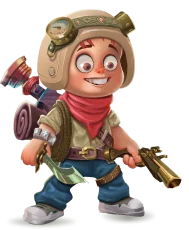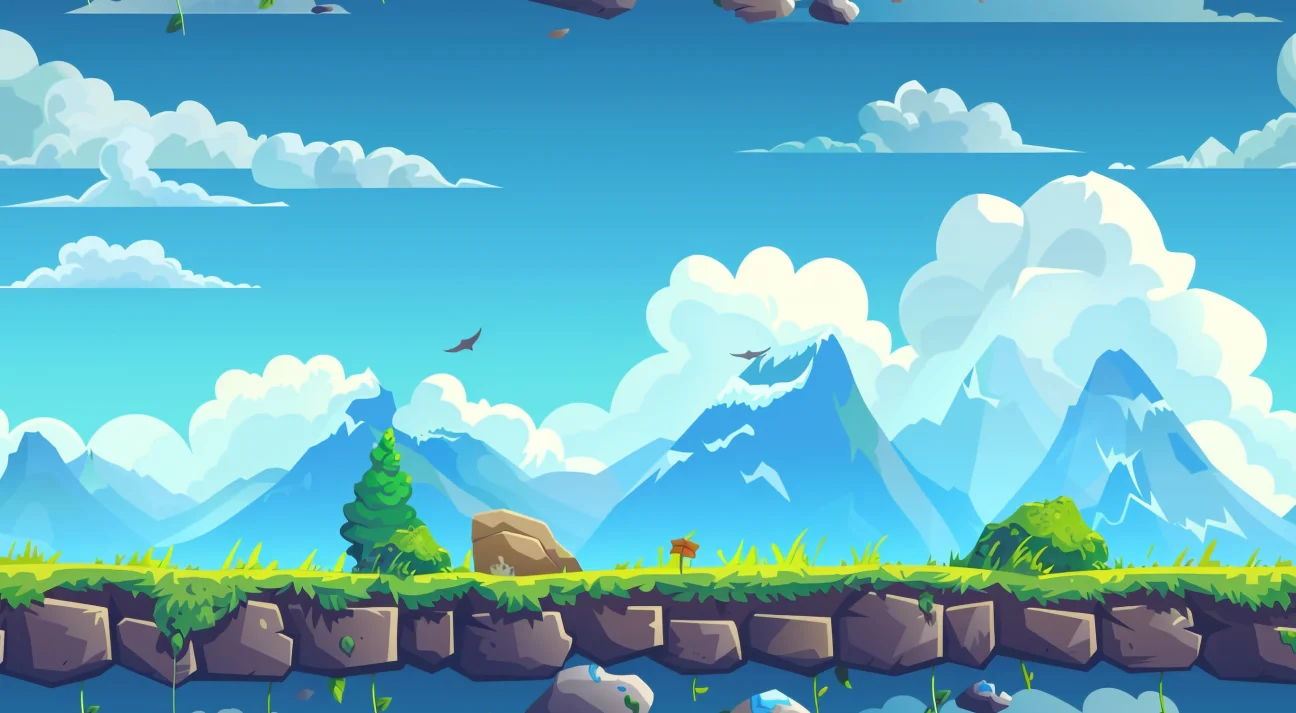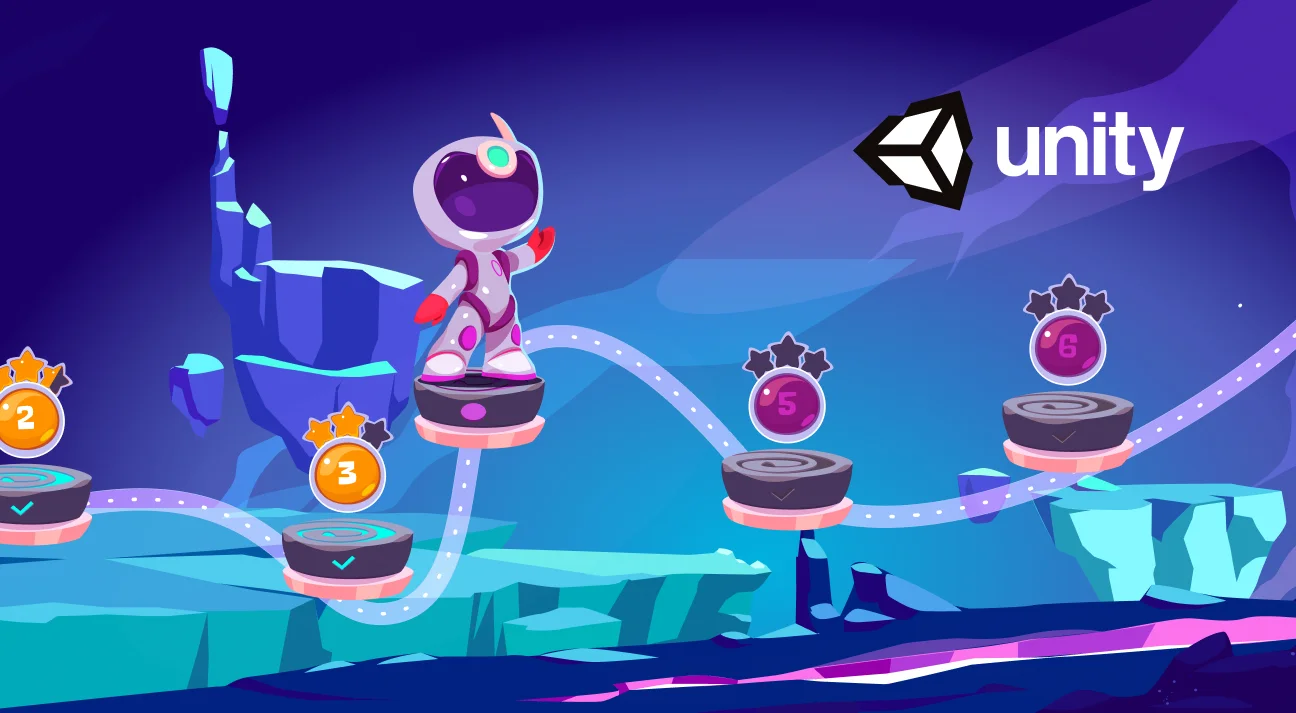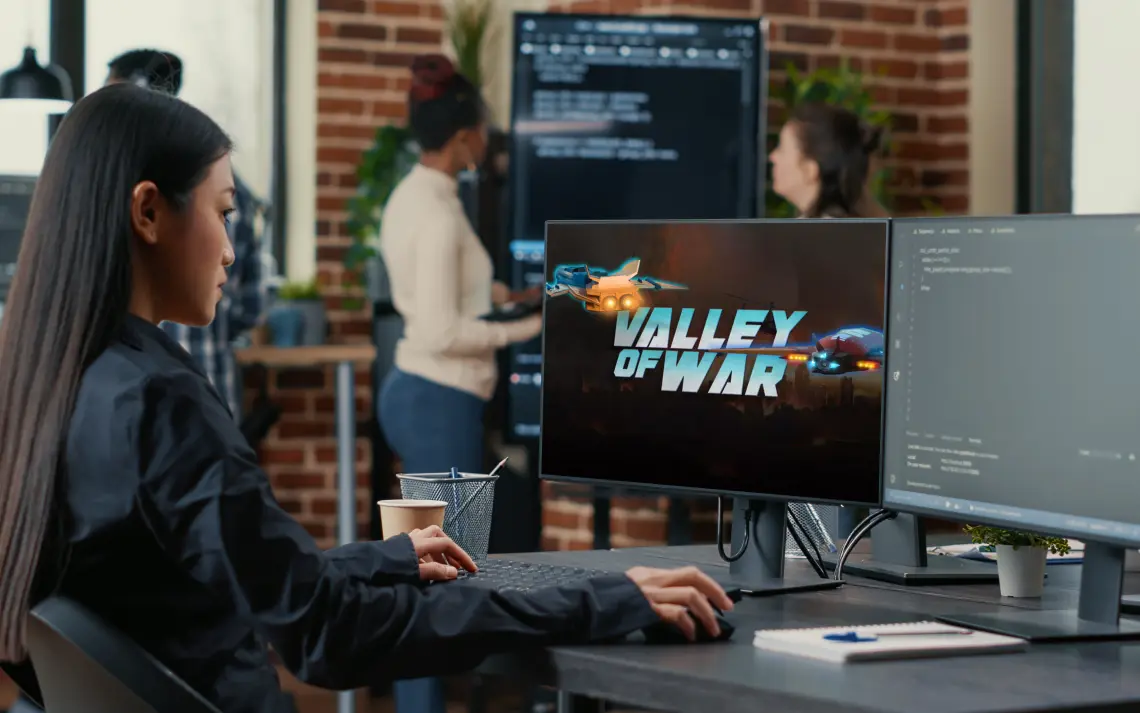
How to Make a Mobile Game App: A Step-by-Step Guide
A game is no longer just a game when it becomes a part of our entertainment factor. We get to spot it on non-gaming-related products. It’s just not confined to our mobile game applications, it lives with us.
Whether popular game characters like Mario, Donkey Kong, Luigi (Mario’s slimmer and much weirder brother has a notable fan base of its own ), Bal Hanuman from Bal Hanuman game, Glenn from Chained Echoes, or Amicia from A Plague Tale: Requiem or renowned themes and soundtracks, a game becomes a part of our life.
But, have you ever wondered what makes the game reach this level of fame? It takes a lot of research and development, brainstorming sessions, creative arguments, and a lot more stuff that takes you to the path of a successful game.
- Why Should You Invest in Mobile Game Development? (Market Overview)
- What Kind of Game Applications are you Planning to Develop?
- How to Create a Mobile Game App from Scratch?
- 6 Common Mistakes to Avoid in Mobile Game App Development Process
- Wrapping Statement
- Why Should You Hire 300Mind for Your Next Game Development?
- FAQs on Mobile Game Development
Why Should You Invest in Mobile Game Development? (Market Overview)
According to SensorTower, the mobile gaming industry is projected to reach $138 billion by 2025.
As per Statista’s report, mobile game apps’ revenue is projected to show an annual compound growth rate (CAGR 2023-2027) of 7.36%, which has resulted in an expected market volume of US$419.70bn by 2027.
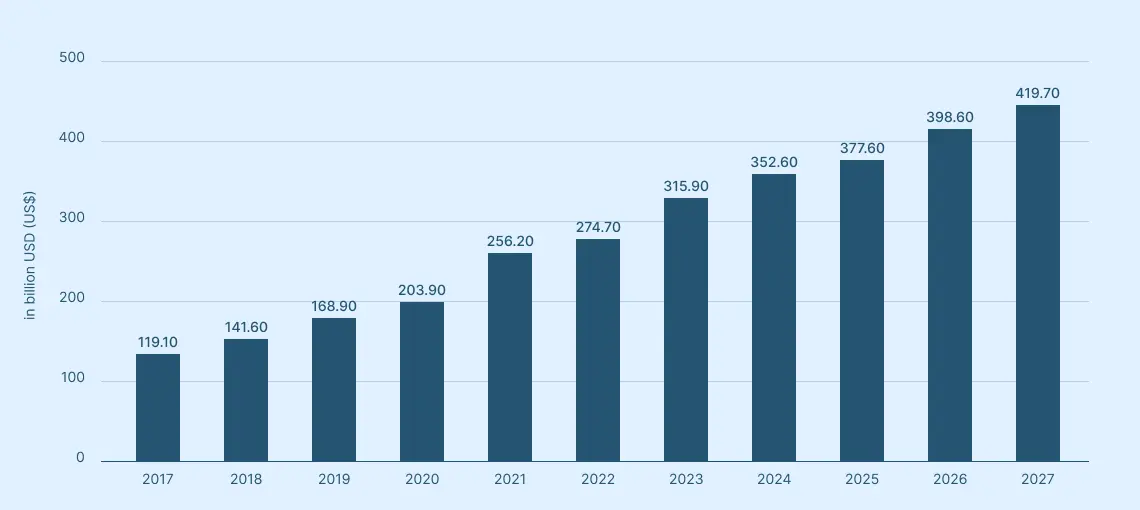
Potential revenue from mobile gaming is growing rapidly and becoming quite lucrative. Hence, you can think about investing in a mobile gaming app if you want to take your company to the next level.
So, these are the most common insights about current market metrics and future predictions for the mobile game development industry.
What Kind of Game Applications are you Planning to Develop?
There are different types of games. You need to decide on what your type is and based on that you can proceed with mobile game development. Here we have executed 4 key types of games to help you decide:
1. Casual Games
Casual users are prone to spend irregular time periods actively engaged in the game. These kinds of games can be created in any genre, its market is comparatively larger. These kinds of games can be created in any genre, its market is comparatively larger. A lot of the most popular mobile games are casual games only.
Generally, these games are created with less complex rules and a simple tap-and-swipe interface, Subway Surfers and Cadycrush are prime examples of the same.
The audience of casual games is generally bigger, and the number of casual game downloads is pretty much higher than that of other kinds of games.
2. Mid-core games
Mid-core games are a tad bit more complex than casual games, from the perspective of production as well as character development and overall gameplay. In such kinds of games, users have to put in more effort and dedication into the game.
As game development companies are generating a good amount of revenue from mid-core gaming applications, we can expect it to continue being one of the trends of game apps.
3. Hard-core games
Hardcore games are for gamers who don’t consider games just as their hobby, they are serious gamers. Think of games like God of War Ragnarok, Loot River, Stray, Suicide Squad: Kill the Justice League, and many others, they are typical hardcore games.
The audience of this kind of game category is generally youth and they spend incessantly longer periods of time playing games.
Since such games take more than the usual period of time spent to become a master of it, thus these games tend to have generally higher user engagement.
4. AAA games
AAA are big-budget games and it requires a dedicated full-time team to work on it and produce such games. Similar hard-core games, they too call for ample time and commitment to get the hang of it.
Up until now, AAA games have primarily been launched for PC or console gaming. As smartphones and data streaming are still not well-suited for games categories like AAA, we will see bigger game titles released for mobile gaming super soon.
So, these were the top 4 categories of games. Games are generally divided into these 4 categories. Let’s move forward to learn about segments that will guide you to create a game from scratch.
How to Create a Mobile Game App from Scratch?
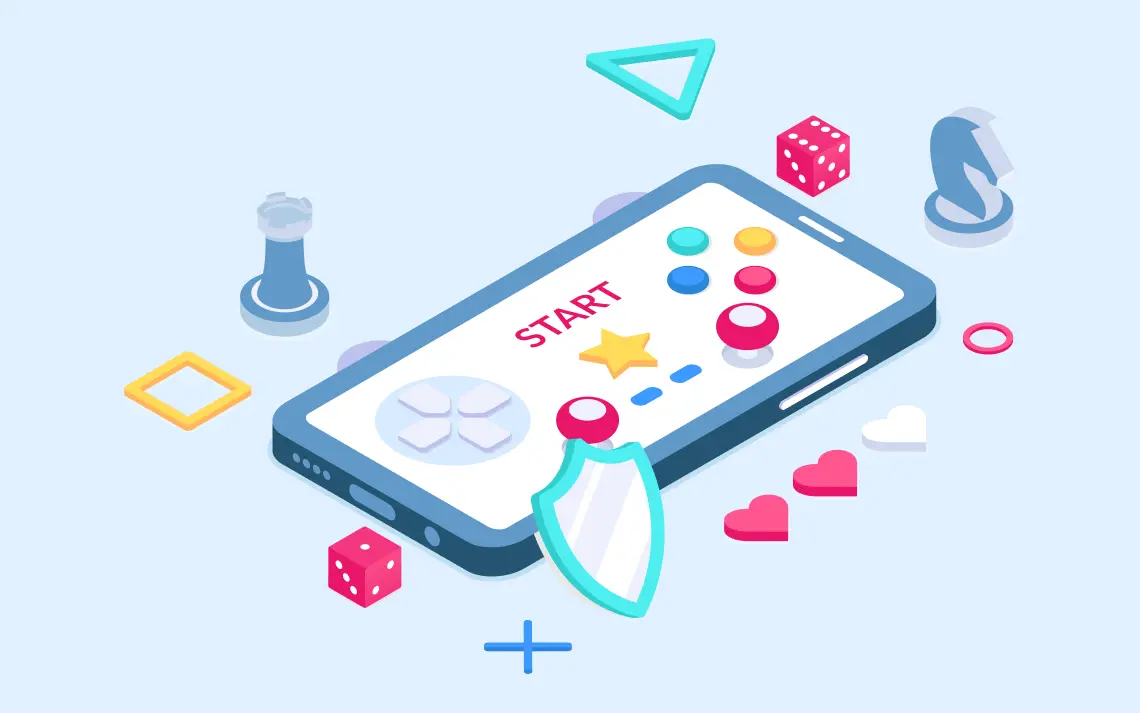
In this section, you will learn in detail about the game app development process to develop a robust game that will be all set to welcome new trends in the gaming industry:
1. It all starts with an idea

Having a great game idea is definitely helpful when it comes to game app development, as it can provide a strong foundation for the game’s concept and overall design. However, having a great idea alone is not enough to guarantee the success of the game app.
Game app development requires a combination of creative, technical, and business skills to bring an idea to life and make it successful. This includes designing engaging gameplay mechanics and creating high-quality graphics and sound effects and a lot more stuff that we will learn in detail further.
Moreover, user feedback and market research play a crucial role in determining the success of a game app. This means that even if you have a great idea for a game, it’s important to test it with potential users and gather feedback to ensure that it resonates with your target audience and has the potential to be successful in the market.
2. Story Matters
We, humans, are prone to look for stories everywhere we go. As we are creating games for humans, then stories should be the prime element of your game. Think of games like Fruit Ninja; users enjoy playing it but it cannot keep them engaged for hours. They will surely think of switching to a different gaming activity as swiping left and right is not something that will make them stick to playing it for hours.
So, while you are at the early stage of brainstorming, keep your team in the loop on this. Come up with creative storylines and shortlist the best. After testing it with your users, implement it in your game development process.
3. Build a game concept

Here are the following points to create a game concept:
Determine the gameplay mechanics
Decide on the mechanics that will make up the core of your game. This includes controls, physics, AI behavior, level design, and more.
Define the game’s genre
Start by deciding what kind of game you want to create. Is it an action game, adventure game, puzzle game, or something else? This will help you determine the overall gameplay mechanics and design.
Identify the target audience
Determine who your game is intended for. Is it for casual gamers, hardcore gamers, or a specific age group? This will help you determine the game’s tone, visual style, and difficulty level.
Consider the platform
Determine which platforms you want to release your game on. This can influence the game’s design and mechanics, as well as its technical specifications.
4. Choose an apt mobile game platform and game engine

Your decision is solely based on two factors: your target audience and budget. More than 50% of the audience uses Android cell phones and the userbase of iOS is also pretty extensive.
Choosing a single platform is nothing but launching your game for a limited market. If you want to improve the area of the reach of your game, you should opt for multi-platform development.
Moreover, choosing a single platform directly brings limitations in terms of the target market. If you want to expand your area of reach for your game, the best option for you is multi-platform development.
Backend technology and the game development engine are the shelters of your game while the game app development process. There are many platforms like Unity 3D for 3D graphics and Unreal Engine.
Read Also: Unity vs Unreal Engine: Which One is Best For Your Game?
5. Time to Develop a Game Design Document

A game design document is a comprehensive document that outlines the various aspects of the video game, including concept, mechanics, story, characters, levels, gameplay, art style, audio, and user interface. It serves as a blueprint for the game development team and provides a detailed plan for the project’s execution.
A mainstream GDD includes information about the target audience, game genre, game world, gameplay mechanics, level design, character design, user interface, and marketing strategy. It may also include technical details, such as programming language, software requirements, and hardware specifications.
The purpose of a GDD is to communicate the vision and goals of the game to the development team and stakeholders, ensuring everyone is on the same page and working towards a common goal. It can also serve as a reference point for the team throughout the development process, helping them stay on track and make informed decisions about the game’s design and development.
6. Create a game structure
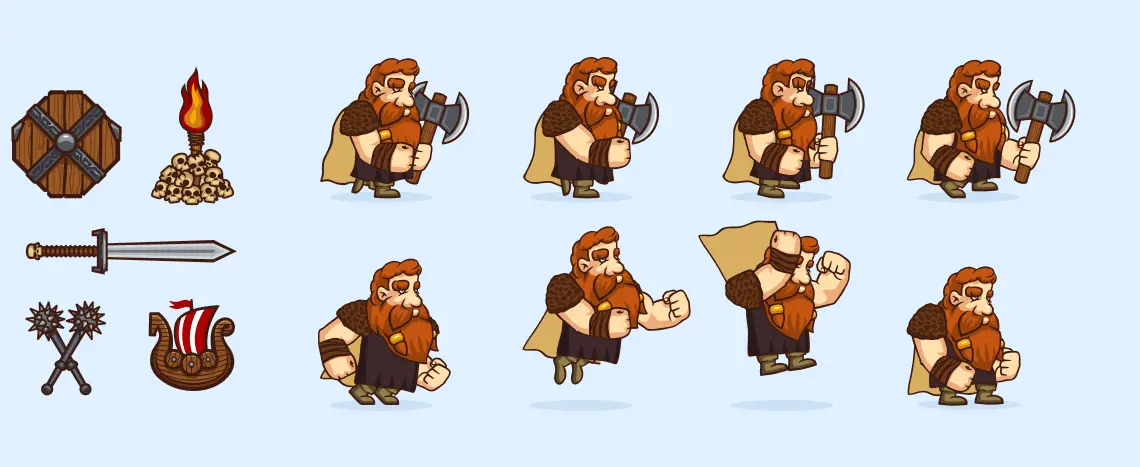
Your game must have a factor of attraction, its key to gaining users’ attention and ultimately is good for sales. A game structure is a blend of various elements, like the characters, the texture, the environment, and all the objects, etc.
Apart from that, the games are processed for 2D and 3D design to polish your game’s visuals.
7. Create a game wireframe
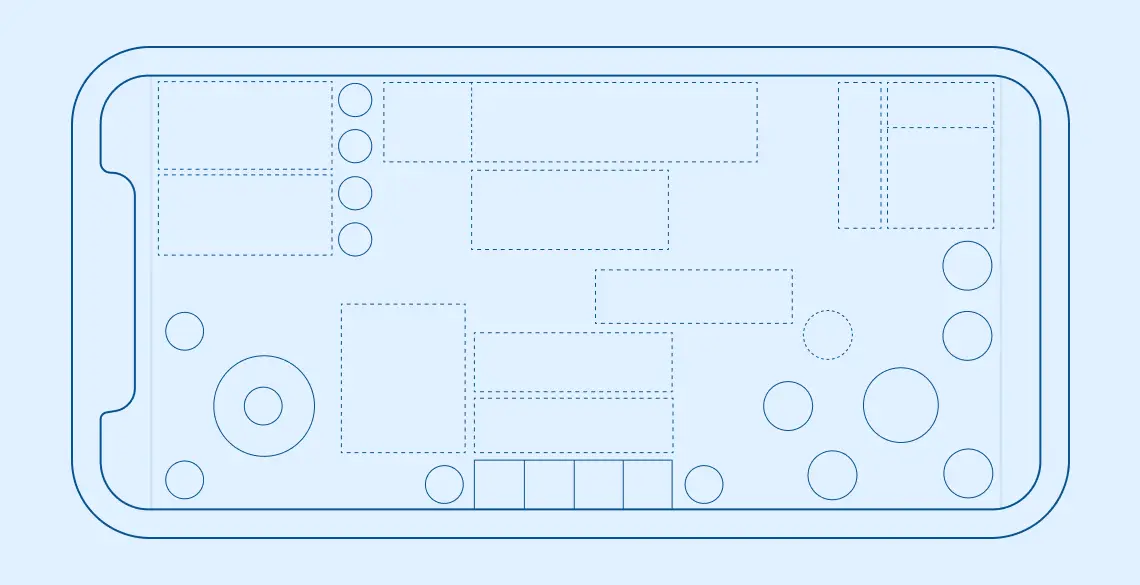
A wireframe is a visual representation of the basic layout and functionality of a game’s user interface or a level’s layout. It is typically created during the mobile game design process as a means of conceptualizing the game’s interface or level design it is implemented.
A wireframe is a simplified version of the final design and typically consists of basic shapes, lines, and text, without any actual visual assets or graphic design elements. It serves as a framework for the game’s interface or level layout, showing the placement of various elements, such as buttons, menus, text boxes, and interactive elements, and the relationship between them.
Game wireframes are useful for identifying potential problems with the game’s design and allowing for changes to be made early in the development process. They are also helpful for communicating the design vision to the development team, stakeholders, and other members of the development process.
8. Develop a mobile game
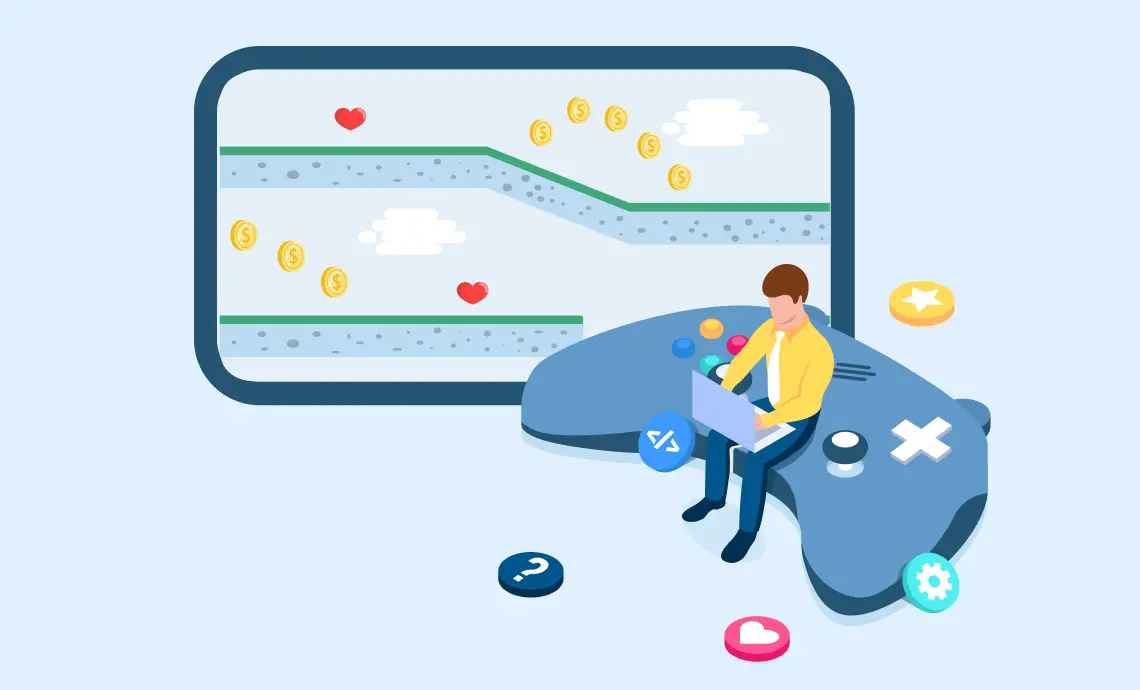
Once you are done with the prototype and it’s approved, you are all set to begin with actual mobile game app development process.
You can begin the game app development process for all the platforms that you want to target with the usage of all the necessary tools like Unity, Blender, Unreal Engine, Robolox, Adobe Illustrator, Sketch, Figma, and so on.
9. Time to test your game
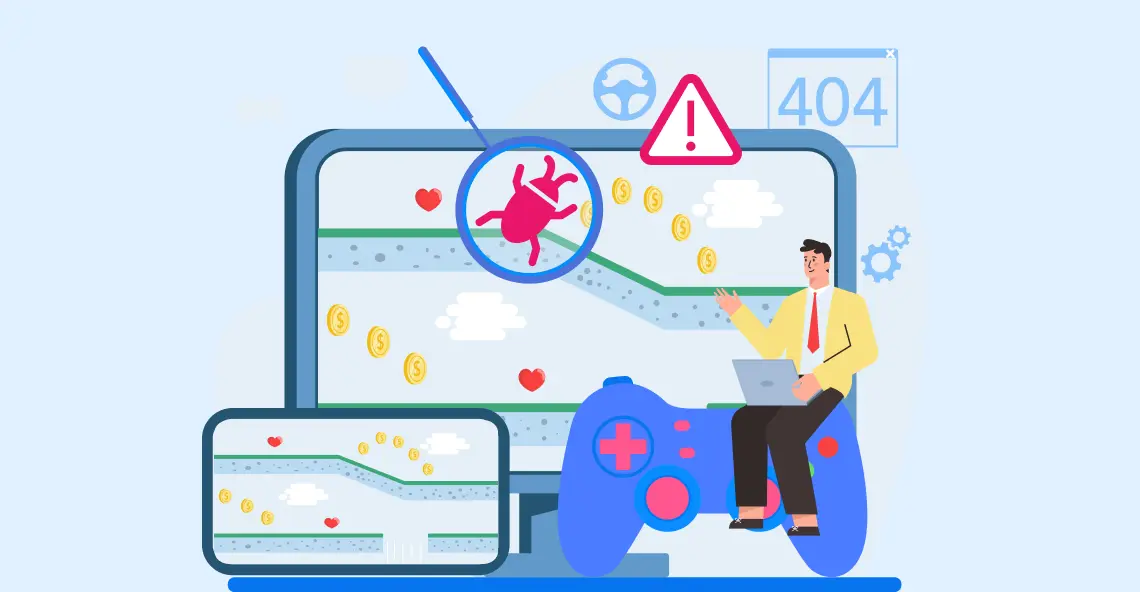
Now that you are done with the development phase, it’s high time to get it tested for bug-fixing.
By launching the beta version and playing it on different devices, you can test the mobile game. As a result, you will discover numerous bugs, which can be fixed, so your game can be developed to perfection.
10. Opt for the most suitable Monetization Strategy
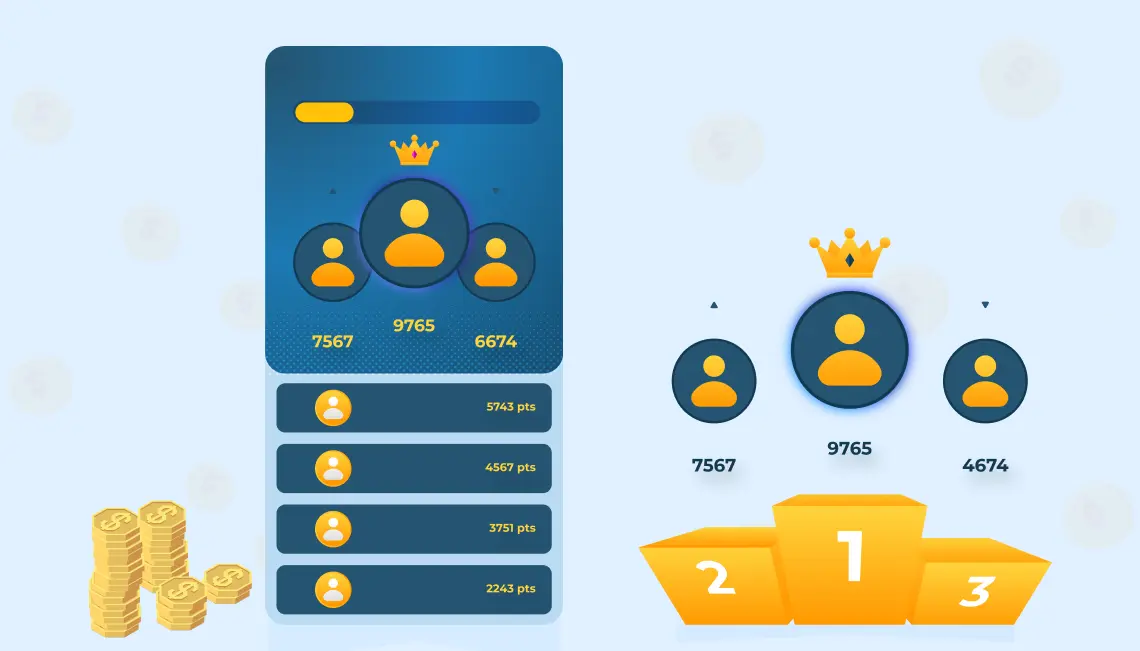
Here we are presenting 5 most used and workable game app monetization strategies, let’s take a look:
In-app Purchases
This is one of the most popular monetization strategies for game developers. In-app purchases allow players to buy virtual goods, power-ups, and other features that enhance their gameplay experience. By offering these virtual goods, game developers can generate revenue from players who are willing to pay for additional features and benefits.
Subscriptions
Game developers can offer players a subscription model that unlocks additional content or features. Players pay a recurring fee, typically on a monthly or yearly basis, to access these benefits.
Pay-to-download
In this app monetization model, players pay a one-time fee to download the game app. This model works best for games that have a high perceived value or are part of an established franchise with an extensive fanbase.
Crowdfunding
Crowdfunding is a newer monetization model that allows game developers to raise funds from their fans and supporter to develop and launch a game. Crowdfunding platforms like Kickstarter or Indiegogo are popular for game developers to gain early funding.
Advertising
Advertising is another popular game app monetization strategy. Developers can generate revenue by displaying ads within their games. They can use various ad formats such as banner ads, interstitial ads, or rewarded ads. With rewarded ads, players are rewarded for watching an ad, which can be an effective way to monetize a game app without disrupting the gameplay experience.
11. Cross your fingers and release your game
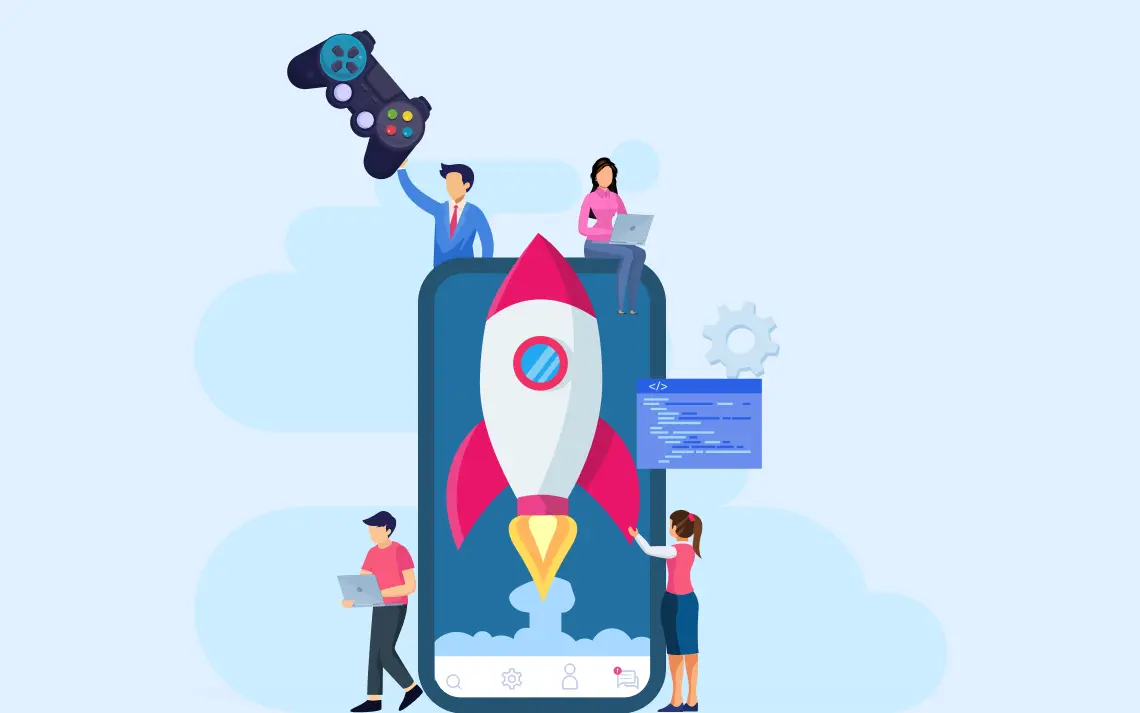
Now that you have performed every required step, it’s time to cross your fingers and release your game.
But launching the game comes up with different challenges. In order to be accepted by the respective app stores, your game must meet their standards. Your game will be reviewed by the app store’s review team, and once they approve, your game will go live on the store so users can download it.
12. Support and Maintenance
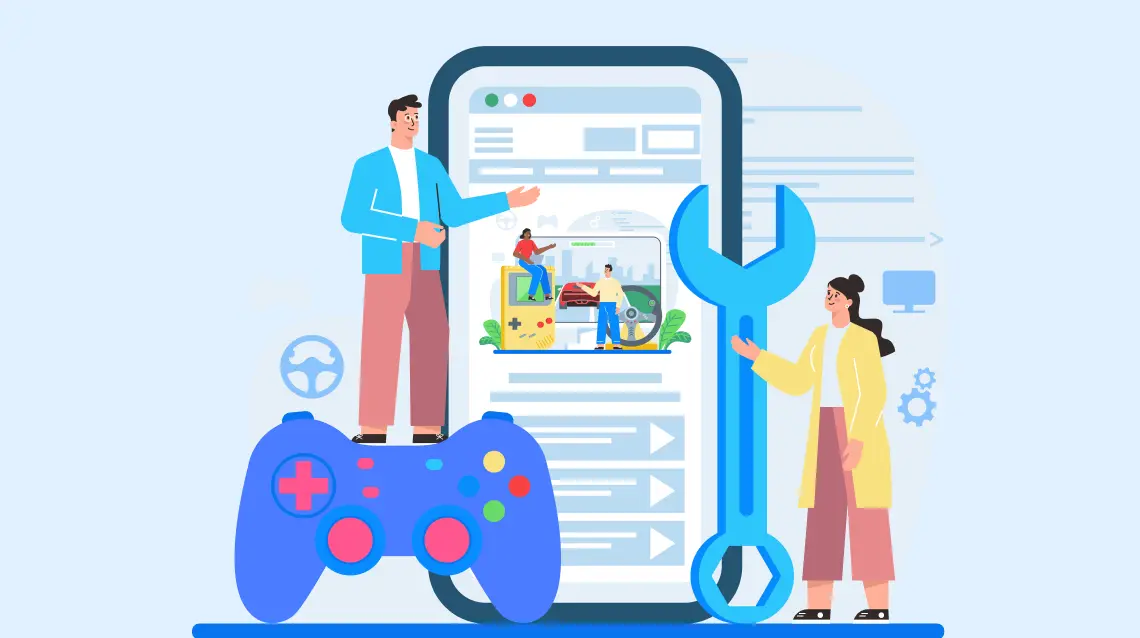
Well, as we all know, launching the game is not the final destination; the process never cease to finish. You have to keep on maintaining your game application by conducting regular audits and taking feedback from your users. Based on reviews, you have got to maintain your application and release regular updates.
6 Common Mistakes to Avoid in Mobile Game App Development Process

Here are common mistakes you must while the gaming development process:
1. Inadequate planning
Lack of proper planning can lead to delays, cost overruns, and a subpar final product. It’s important to create a detailed project plan that outlines every aspect of the game app development process, including timelines, budget, resources, and milestones.
2. Focusing too much on graphics
While high-quality graphics are important for a game app, they are not the only thing that matters. It’s essential to focus on creating engaging gameplay, designing a user-friendly interface, and developing interesting game mechanics.
3. Ignoring user feedback
User feedback is crucial for creating a successful game app. Ignoring user feedback can result in a game that fails to attract and retain users. It’s important to regularly solicit user feedback and use it to improve the game app.
4. Overcomplicating the game
It’s important to keep the game simple and easy to understand, especially for casual gamers. Overcomplicating the game with too many features or complex gameplay mechanics can be overwhelming and turn off users.
5. Neglecting game performance
A poorly optimized game app can result in slow loading times, crashes, and other performance issues that can frustrate users. It’s important to optimize the game app for performance, including graphics, sound, and code.
6. Rushing to release
While it’s important to launch the game app quickly to capitalize on market opportunities, rushing to release can result in a subpar product that fails to attract users. It’s important to take the time to develop and test the game app thoroughly before launching it.
Wrapping Statement
So, this was all from our side about mobile game app development. We have tried to cover every important detail related to mobile game app development for you to carry out a seamless app development process. Cheers!
Why Should You Hire 300Mind for Your Next Game Development?
We strive hard and bring out the best results or should we rather say desired results? As you can see our hard work behind on-point graphics and animation of the games along with outstanding sound effects.
From creative game design strategies to extensive development, it all comes under our umbrella of services. We have got many clients recommending our game development services as we have a proficient team of developers working dedicatedly for our clientele.
So, if you are looking for a game development partner then 300Mind can be a great fit for you.
FAQs on Mobile Game Development
A game development cost mainly depends on the following factors: game design, technology stack, hired team, market trends, 2D and 3D design, the complexity of the game, game category, and all other relevant factors that determine the final cost of game development.
Engines like Unity, Unreal Engine, Roblox, Godot, GameMaker, and many other prominent engines are often used in mobile game app development. For instance, unreal engine for mobile game development is a powerful option for creating high-quality mobile games.
You can opt for the game app monetization strategies that we have mentioned above for your help. Following those strategies will definitely help you gain desired revenue from your gaming app.
